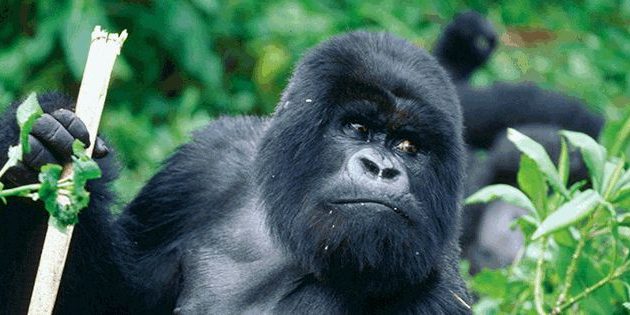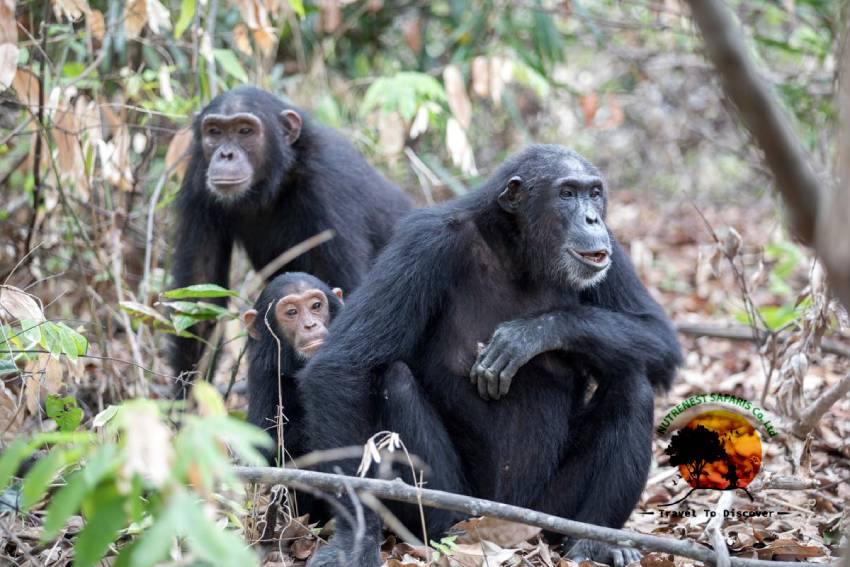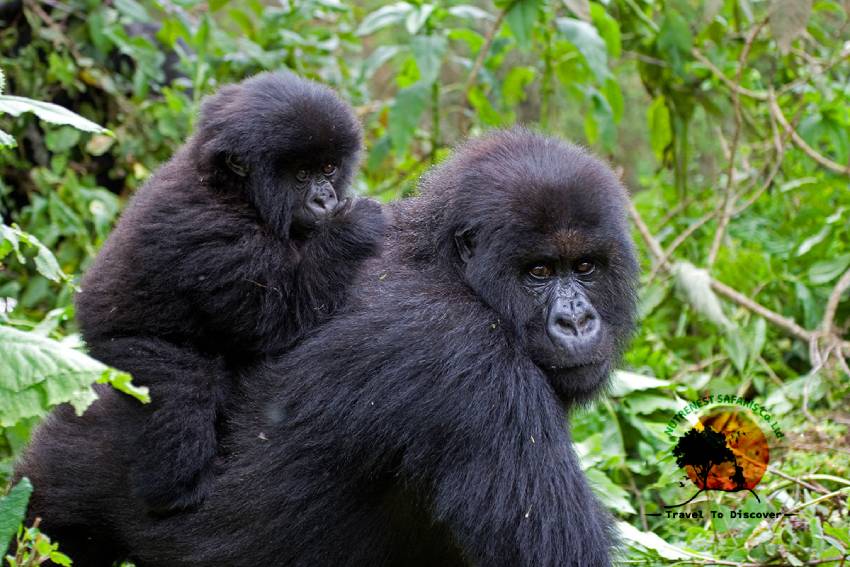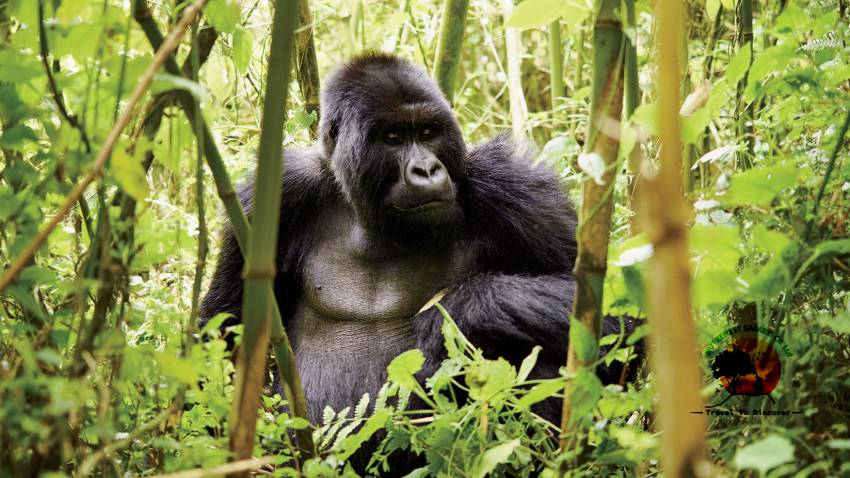Nestled within the verdant forests of Bwindi Impenetrable National Park in Uganda and the rolling hills of Volcanoes National Park in Rwanda lies a breathtaking adventure that beckons to the intrepid traveler: gorilla trekking. This extraordinary experience offers a rare glimpse into the world of the endangered mountain gorillas, allowing visitors to immerse themselves in the pristine beauty of their natural habitat. In this comprehensive guide, we delve deep into the essence of gorilla trekking, addressing questions about safety, value, and the unparalleled rewards that come with embarking on this remarkable journey.
Exploring the Essence of Gorilla Trekking:
Gorilla trekking is not merely a wildlife excursion; it is a soul-stirring odyssey into the heart of Africa’s wilderness. At its core, gorilla trekking is about connecting with nature on a profound level, forging a bond with one of the world’s most enigmatic and endangered species: the mountain gorilla. Led by experienced guides and trackers, trekkers embark on a quest through rugged terrain, dense vegetation, and mist-shrouded forests in search of these gentle giants.
The journey itself is an adventure, as trekkers navigate winding paths, traverse babbling streams, and ascend steep slopes in pursuit of the elusive gorillas. Along the way, the sights and sounds of the forest envelop them, immersing them in a sensory experience like no other. Each step brings them closer to the realization of a dream—to come face to face with a wild mountain gorilla in its natural habitat.
Upon encountering a gorilla family, a sense of awe and reverence washes over trekkers as they observe these magnificent creatures in their element. The sight of a silverback gorilla, with his powerful frame and commanding presence, is both humbling and exhilarating. Yet, it is the intimate moments—the playful antics of juveniles, the tender interactions between family members—that leave an indelible mark on the soul.
Is Gorilla Trekking Safe?
Safety is paramount in any wilderness adventure, especially one that involves close proximity to wild animals. Fortunately, gorilla trekking is a meticulously managed activity with stringent safety measures in place to ensure the well-being of both visitors and gorillas alike.
Before embarking on a trek, visitors receive comprehensive briefings on gorilla trekking etiquette, safety protocols, and the importance of minimizing impact on the gorillas’ habitat. These briefings, conducted by knowledgeable guides and park rangers, equip trekkers with the necessary knowledge and tools to enjoy a safe and respectful experience.
During the trek itself, armed park rangers accompany each group, providing protection and guidance throughout the journey. These rangers are highly trained professionals who understand the behavior of the gorillas and are prepared to intervene if necessary. While encounters with gorillas are typically peaceful, the presence of armed guards serves as a precautionary measure, ensuring the safety and security of all involved.
Furthermore, gorilla trekking is conducted in small groups, with strict limits on the number of visitors allowed to visit each gorilla family per day. This not only minimizes stress and disturbance to the gorillas but also enhances the safety and intimacy of the experience for trekkers.
Is Gorilla Trekking Worth the Investment?
For many travelers, gorilla trekking represents a significant investment of both time and money. From permit fees to accommodation and transportation costs, the expenses associated with gorilla trekking can add up. However, the question of whether it’s worth the investment ultimately boils down to the individual’s priorities, interests, and budget.
Those who have experienced gorilla trekking firsthand often describe it as a life-changing and profoundly rewarding experience that transcends monetary value. The opportunity to witness these majestic creatures up close in their natural habitat is priceless, leaving a lasting impression that resonates long after the trek has ended.
Moreover, the fees paid for gorilla trekking play a crucial role in conservation efforts aimed at protecting mountain gorillas and their habitat. A portion of the proceeds goes towards funding anti-poaching patrols, community development projects, and initiatives to promote environmental sustainability. By participating in gorilla trekking adventures, visitors directly contribute to the preservation of these endangered animals and the ecosystems they inhabit.
Beyond the monetary value, gorilla trekking offers intangible rewards that are difficult to quantify. It is a journey of discovery, a chance to reconnect with the natural world and gain a deeper appreciation for the delicate balance of life on Earth. It is an opportunity to step outside of one’s comfort zone, to challenge oneself both physically and emotionally, and to emerge from the experience forever changed.
Which Month is Best to Trek Gorillas?
The best time to trek gorillas largely depends on your preferences and priorities. Uganda and Rwanda, the two primary destinations for gorilla trekking, experience distinct seasons that can influence the overall trekking experience.
In Uganda, gorilla trekking is possible year-round, thanks to the country’s equatorial climate. However, the dry seasons (from June to August and December to February) are generally considered the best times to visit. During these months, rainfall is minimal, and gorillas are more likely to be found in lower elevations, making trekking easier and more predictable. Additionally, the dry season coincides with Uganda’s peak tourist season, offering ideal weather conditions and greater availability of permits.
In Rwanda, gorilla trekking follows a similar pattern, with the dry seasons (from June to September and December to February) offering optimal trekking conditions. However, Rwanda’s rainy season (from March to May and October to November) can also be a rewarding time to visit, as the forests burst to life with vibrant foliage, and gorillas are still accessible for trekking. Plus, travelers may benefit from lower permit prices and fewer crowds during the off-peak months.
Ultimately, the best time to trek gorillas is whenever you have the opportunity to do so. Whether you choose to visit during the dry season for optimal weather or the rainy season for a more immersive jungle experience, the thrill of encountering gorillas in their natural habitat remains unparalleled.
In Conclusion:
Gorilla trekking in Bwindi and Rwanda is a transformative adventure that promises unparalleled rewards for those willing to embark on the journey. From the thrill of encountering wild mountain gorillas to the sense of awe inspired by the untamed beauty of the African wilderness, the experience is nothing short of extraordinary.
While safety and financial considerations are important factors to consider, the true value of gorilla trekking lies in the profound connection it fosters with nature and the lasting impact it leaves on the soul. For those seeking a meaningful and unforgettable adventure, gorilla trekking is an experience that promises to exceed all expectations. So pack your bags, lace up your boots, and prepare to embark on the adventure of a lifetime. The mountains are calling, and the gorillas await.







